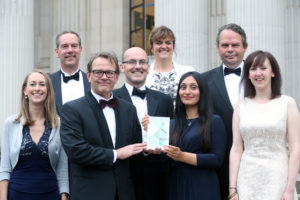Powell LC, Sowedan A, Khan S, Wright CJ, Hawkins K, Onsøyen E, Myrvold R, Hill KE, Thomas DW.
Biofouling. 2013 Apr;29(4):413-21. doi: 10.1080/08927014.2013.777954.
External link to Pubmed.gov
Abstract
The influence of a novel, safe antibiofilm therapy on the mechanical properties of Pseudomonas aeruginosa and Acinetobacter baumannii biofilms in vitro was characterized. A multiscale approach employing atomic force microscopy (AFM) and rheometry was used to quantify the mechanical disruption of the biofilms by a therapeutic polymer based on a low-molecular weight alginate oligosaccharide (OligoG). AFM demonstrated structural alterations in the biofilms exposed to OligoG, with significantly lower Young’s moduli than the untreated biofilms, (149 MPa vs 242 MPa; p < 0.05), a decreased resistance to hydrodynamic shear and an increased surface irregularity (Ra) in the untreated controls (35.2 nm ± 7.6 vs 12.1 nm ± 5.4; p < 0.05). Rheology demonstrated that increasing clinically relevant concentrations of OligoG (<10%) were associated with an increasing phase angle (δ) over a wide range of frequencies (0.1-10 Hz). These results highlight the utility of these techniques for the study of three-dimensional biofilms and for quantifying novel disruption therapies in vitro.
For further information, please contact:
Philip D. Rye R&D Director; phil.rye@algipharma.com
April 2013


